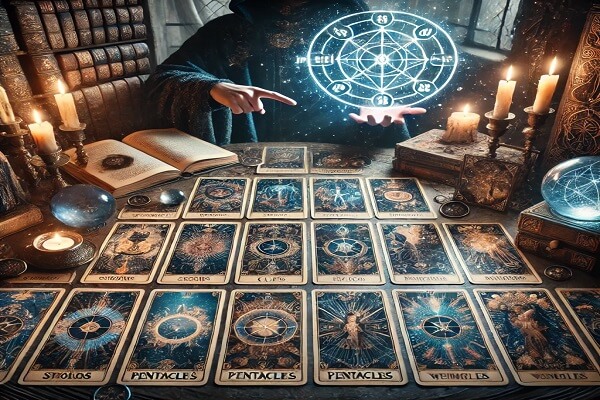The Role of Symbolism in Tarot: Decoding Hidden Messages

Tarot is more than just a deck of beautifully illustrated cards; it is a rich tapestry of symbols, each brimming with meaning and significance. Every image, color, number, and pattern within a tarot card holds a deeper message waiting to be discovered. Understanding and interpreting these symbols can elevate your tarot readings, providing richer insights and more profound connections. In this blog, we explore the role of symbolism in tarot and how to decode the hidden messages within the cards.
Why Symbolism Matters in Tarot
Symbolism is the language of the subconscious. It transcends words and speaks directly to our inner knowing, evoking emotions and insights that can’t always be expressed through logic alone. Each symbol in a tarot card acts as a key, unlocking layers of meaning and guiding you to a deeper understanding of the reading. This is why different readers can look at the same card and derive unique, yet equally valid, interpretations.
Common Symbols and Their Meanings
While every tarot deck has its own artistic style, certain symbols are universal. Here are some common tarot symbols and their meanings:
1. Animals
Animals in tarot often represent instincts, behaviors, and spiritual guidance. For example:
- The Lion: Symbolizes strength, courage, and power, as seen in the Strength card.
- The Snake: Represents transformation, healing, and sometimes deception.
- The Bird: Often signifies freedom, communication, or messages from the divine.
2. Elements
The four classical elements—earth, air, fire, and water—are fundamental in tarot, each associated with a specific suit in the Minor Arcana:
- Earth (Pentacles): Stability, material wealth, and the physical world.
- Air (Swords): Intellect, communication, and conflict.
- Fire (Wands): Passion, creativity, and action.
- Water (Cups): Emotions, relationships, and intuition.
3. Colors
Colors in tarot carry emotional and symbolic weight. For instance:
- Red: Passion, energy, and sometimes danger.
- Blue: Calmness, spirituality, and communication.
- Yellow: Enlightenment, happiness, and intellect.
Decoding Symbols in a Reading
To interpret the symbols in a tarot reading effectively, follow these steps:
1. Observe Without Judgment
When you first lay out the cards, take a moment to observe them without immediately jumping to conclusions. What symbols stand out to you? Which ones evoke a strong emotional reaction?
2. Consider the Context
A symbol’s meaning can change depending on the context of the reading and the surrounding cards. For example, a snake in the Death card may represent transformation, while in the Seven of Swords, it might hint at deceit.
3. Trust Your Intuition
Symbols often trigger intuitive insights. If a particular image resonates with you or reminds you of something personal, don’t dismiss it. Your intuition may be guiding you to a deeper understanding of the message.
Practical Exercises to Deepen Symbolic Understanding
Here are some exercises to help you connect with tarot symbolism:
- Symbol Journal: Create a journal where you record each symbol you encounter in your readings, along with its traditional and personal meanings.
- Daily Symbol Meditation: Choose a card each day and meditate on its symbols. Reflect on how they relate to your current experiences.
- Symbol Mapping: Draw connections between symbols in different cards. For example, compare the sun in the Sun card and the moon in the Moon card. What do they tell you about light and shadow?
Advanced Symbol Interpretation
As you become more comfortable with tarot symbolism, try incorporating other systems of knowledge, such as astrology, numerology, and mythology, into your readings. These disciplines can add layers of meaning and provide a richer, more nuanced interpretation of the symbols.
Conclusion
Symbolism is the heart of tarot, offering a gateway to deeper understanding and insight. By learning to decode the symbols in each card, you can unlock hidden messages and enrich your readings. Remember, the journey of exploring tarot symbols is a personal and ongoing one—there is always more to discover and learn. Embrace the mystery, trust your intuition, and let the symbols guide you on your tarot journey.

